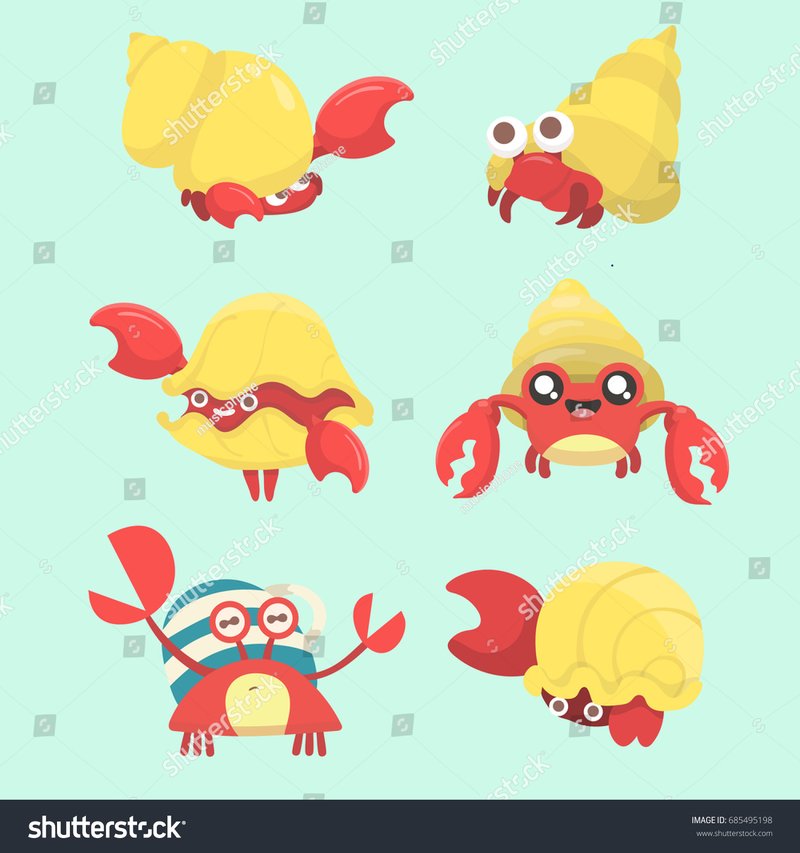
Imagine sitting at a beach bonfire, sharing tales about the ocean’s wonders. Someone mentions the hermit crab, and suddenly you’re hearing that they’re loners, or that they can change their shells whenever they want. It’s fascinating how these beliefs evolve. Let me take you on a journey to explore some of the most common myths and cultural beliefs surrounding hermit crabs, and help you separate fact from fiction.
Common Myths About Hermit Crabs
One of the most widespread myths is that hermit crabs are entirely solitary creatures. People often think they prefer to live alone, much like a recluse in a cozy cottage. In reality, this isn’t quite true. While hermit crabs do have a penchant for individualism, they also thrive in groups. In the wild, you might find dozens of hermit crabs huddled together in a safe spot, sharing warmth and perhaps even a meal.
Another myth is that hermit crabs can change their shells at will, like some magical transformation in a storybook. Here’s the thing: they can only switch shells when they find a suitable one and when they feel safe enough to do so. Shell swapping is a careful process and happens mostly when they outgrow their current shell, needing a bigger place to live. It’s not a whimsical decision; it’s a survival instinct.
There’s also a belief that hermit crabs can survive without a shell. This one’s particularly misleading. Without a shell, hermit crabs are vulnerable to predators and the elements. They rely on their shells not just for protection but also for moisture retention. So, don’t be fooled—these little guys are far from helpless, but they definitely need their shells to thrive.
Cultural Beliefs About Hermit Crabs
In some cultures, hermit crabs symbolize transformation and adaptability. This idea makes sense when you think about how they change shells as they grow. Many people view these creatures as a metaphor for change in life, reminding us that it’s okay to seek new experiences or leave behind what’s no longer serving us.
In Hawaii, for example, hermit crabs are often associated with good luck and prosperity. Their presence near your home might be seen as a sign that success is on the horizon. People might even buy hermit crabs to keep as pets, believing they will bring good fortune. This belief can encourage a sense of connection with nature and its creatures.
However, some cultures also view hermit crabs with a bit of caution. For instance, in certain coastal regions, they are believed to be a bad omen, particularly if they wander into homes uninvited. This perspective often stems from the idea of nature “intervening” in human affairs, reminding us of the delicate balance between our world and the wild.
Understanding the Ecological Role of Hermit Crabs
Beyond myths and beliefs, hermit crabs play a crucial role in their ecosystems. They are scavengers, cleaning up waste and dead organic material, which helps maintain the health of their habitats. By turning over sand and substrate as they search for food, they aerate the soil. This not only benefits the hermit crabs but also a variety of other organisms living in the same area.
Moreover, hermit crabs often co-exist with other marine life, participating in a symbiotic relationship. They provide a home for certain sea creatures seeking protection in their shells, such as tiny anemones or small fish. In return, these guests can deter predators or provide a bit of camouflage. Isn’t it fascinating how nature finds a way to create interconnectedness?
Hermit crabs are also vital to many coastal communities. They serve as bait for local fishermen and contribute to the diet of various predators. This shows just how interwoven they are within the larger food web.
Pet Ownership and Misconceptions
If you’re considering bringing a hermit crab into your home, you might encounter several misconceptions regarding their care. For instance, a common belief is that they are low-maintenance pets. While they are hardy and adaptable, they still require specific conditions to thrive—like proper humidity levels, temperature control, and access to both fresh and saltwater.
Many people think hermit crabs can thrive in small, barren environments, like a glass jar or a small aquarium. This isn’t the case! They need room to roam and explore, along with substrates that allow for burrowing. A larger habitat with proper decor can imitate their natural environment, which is essential for their well-being.
Food is another area where misbeliefs abound. Some pet owners assume hermit crabs can eat just about anything. But these little scavengers need a balanced diet of commercial crab food, fresh fruits, vegetables, and even calcium sources for healthy shell growth. It’s a bit like feeding a toddler; you’ve got to balance nutritious options while making it enticing!
Conservation and Ethical Considerations
With the increase in hermit crab popularity as pets, conservation concerns have also arisen. Wild populations are vulnerable to over-harvesting, especially when taken from their natural environments for the pet trade. Honestly, it’s crucial to source hermit crabs from responsible breeders or pet stores that prioritize sustainability.
You might also wonder about the ethics of keeping hermit crabs as pets. While they can make fascinating companions, it’s essential to be sure you can meet their needs. Before getting one, consider the long-term commitment involved in caring for them properly. It’s not just a whim; like any pet, they deserve a loving home where they can thrive.
Moreover, education plays a crucial role in helping others understand and appreciate hermit crabs. By sharing what you’ve learned about their needs and the myths surrounding them, you can foster greater awareness and compassion for these creatures and their habitats.
In wrapping up, hermit crabs are much more than quirky little beach dwellers—they’re creatures of fascinating complexity, interwoven with myths and cultural beliefs that reflect our relationship with nature. By understanding the truth behind these myths, we can build a deeper respect for hermit crabs and their vital role in the ecosystem.
If you’re thinking about keeping a hermit crab as a pet, make sure you’re prepared for the responsibility that comes with it. Embrace the learning journey, and you might just find that these little creatures will surprise you with their charm and adaptability. In the end, appreciating hermit crabs in all their glory means recognizing them for who they are: resilient beings deserving of care, respect, and a good shell!

